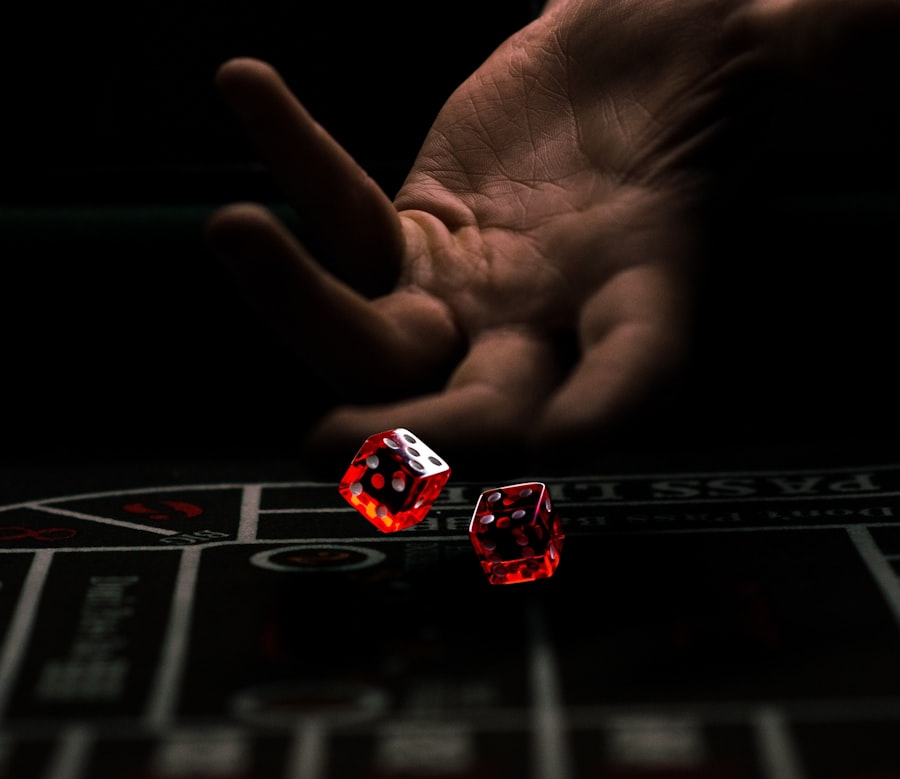Download links
How to install Mastering the Art of Blackjack: Tips for Success APK?
1. Tap the downloaded Mastering the Art of Blackjack: Tips for Success APK file.
2. Touch install.
3. Follow the steps on the screen.
Description
Blackjack, often referred to as 21, is a popular card game that combines elements of chance and skill. The objective is straightforward: players aim to have a hand value that is closer to 21 than the dealer’s hand without exceeding that number. Each player is dealt two cards, and the dealer also receives two cards, with one card face up and the other face down.
The values of the cards are simple; numbered cards from 2 to 10 are worth their face value, while face cards (kings, queens, and jacks) are valued at 10. The ace can be worth either 1 or 11, depending on which value benefits the hand more. Understanding the basic rules is crucial for any player looking to engage in blackjack.
Players can choose to “hit,” which means taking an additional card to increase their hand value, or “stand,” which means keeping their current hand. If a player’s total exceeds 21, they “bust” and lose the round automatically. The dealer must follow specific rules regarding hitting and standing, typically hitting until reaching a total of 17 or higher.
This structured approach creates a dynamic interplay between the players and the dealer, making each round unique and engaging.
Key Takeaways
- Blackjack is a card game where the goal is to beat the dealer’s hand without going over 21.
- A winning strategy in blackjack involves knowing when to hit, stand, double down, or split based on the cards you and the dealer have.
- Managing your bankroll is crucial in blackjack to ensure you don’t bet more than you can afford to lose.
- Recognizing when to hit, stand, double down, or split requires understanding the value of your hand and the dealer’s upcard.
- Practicing good table etiquette is important in blackjack to maintain a positive and respectful gaming environment.
- Knowing when to walk away is essential in blackjack to prevent excessive losses and maintain a healthy relationship with the game.
Developing a Winning Strategy
To excel at blackjack, players must develop a strategic approach that maximizes their chances of winning while minimizing losses. One of the most effective strategies is known as basic strategy, which involves making decisions based on mathematical probabilities rather than gut feelings. Basic strategy charts are widely available and provide players with guidance on whether to hit, stand, double down, or split based on their hand and the dealer’s visible card.
For instance, if a player has a total of 16 and the dealer shows a 10, basic strategy suggests hitting, as the likelihood of improving the hand outweighs the risk of busting. In addition to basic strategy, players can also explore advanced techniques such as card counting. This method involves keeping track of the ratio of high cards to low cards remaining in the deck.
By doing so, players can adjust their betting strategies accordingly; for example, if there are more high cards left in the deck, the player may increase their bets since the odds of getting a favorable hand improve. While card counting requires practice and concentration, it can significantly enhance a player’s edge over the house when executed correctly.
Managing Your Bankroll

Effective bankroll management is a cornerstone of successful blackjack play. Players must establish a budget before sitting down at the table and stick to it rigorously. This budget should reflect not only the amount they are willing to lose but also their overall financial situation.
A common recommendation is to allocate no more than 1% to 5% of your total bankroll for each individual bet. This approach ensures that players can withstand losing streaks without depleting their funds too quickly. In addition to setting limits on individual bets, players should also consider setting win and loss limits for each session.
For instance, if a player starts with a bankroll of $500 and sets a win limit of $100 and a loss limit of $50, they will leave the table once they reach either threshold. This practice helps maintain discipline and prevents emotional decision-making that can lead to significant losses. By adhering to these principles of bankroll management, players can enjoy their time at the blackjack table while minimizing financial risk.
Recognizing When to Hit, Stand, Double Down, or Split
| Player’s Hand | Dealer’s Upcard | Decision |
|---|---|---|
| Hard 8 or less | Any | Hit |
| Hard 9 | 2, 7, 8, 9, 10, Ace | Hit |
| Hard 9 | 3, 4, 5, 6 | Double Down |
| Hard 10 | 2, 3, 4, 5, 6, 7, 8, 9 | Double Down |
| Hard 10 | 10, Ace | Hit |
| Hard 11 | 2, 3, 4, 5, 6, 7, 8, 9, 10 | Double Down |
| Hard 11 | Ace | Hit |
| Pair of 2s or 3s | 2, 3, 4, 5, 6, 7 | Split |
| Pair of 4s | 5, 6 | Hit |
| Pair of 4s | 2, 3, 4 | Split |
Making informed decisions about when to hit, stand, double down, or split is essential for maximizing success in blackjack. Each option has its own strategic implications based on the player’s hand and the dealer’s upcard. For example, if a player has a total of 11, doubling down is often advisable because there is a strong chance of drawing a ten or face card, which would yield a powerful hand of 21.
Conversely, if a player has a total of 12 against a dealer’s 2 or 3, standing may be the better option since hitting could easily result in busting. Splitting pairs is another critical decision point in blackjack. When dealt two cards of the same value, players have the option to split them into two separate hands.
However, splitting tens or face cards is generally discouraged since it breaks up a strong hand totaling 20. Understanding these nuances and applying them strategically can significantly impact a player’s overall success at the table.
Practicing Good Table Etiquette
Good table etiquette is an often-overlooked aspect of playing blackjack but is essential for creating a positive gaming environment for everyone involved. Players should familiarize themselves with the unwritten rules of conduct at the table. For instance, it is customary to wait for your turn before making any decisions and to avoid disrupting other players’ concentration by talking excessively or making loud noises.
Additionally, players should refrain from touching their chips once they have placed their bets; this helps maintain clarity for both the dealer and other players regarding active bets. Another important aspect of table etiquette involves tipping the dealer. While not mandatory, it is considered courteous to tip when you win or after a particularly good session.
A simple gesture like placing an extra chip on the table can go a long way in fostering goodwill and enhancing your overall experience at the casino. By adhering to these etiquette guidelines, players contribute to a respectful atmosphere that benefits everyone at the table.
Knowing When to Walk Away

One of the most critical skills in gambling is knowing when to walk away from the table. Emotional decision-making can lead to chasing losses or overstaying one’s welcome at the blackjack table, resulting in significant financial setbacks. Players should establish clear criteria for when they will leave the table—whether it be after reaching their loss limit or achieving their win goal.
Recognizing that gambling should be an enjoyable activity rather than a source of stress is vital for maintaining a healthy relationship with gaming. Additionally, taking breaks during play can help players maintain focus and avoid fatigue-induced mistakes. Stepping away from the table for a few minutes allows players to reassess their strategies and emotions before returning with a clearer mindset.
Whether it’s enjoying a drink at the bar or simply taking a stroll around the casino floor, these breaks can provide valuable perspective and help prevent impulsive decisions that could lead to regrettable outcomes. Ultimately, understanding when to walk away is an essential component of responsible gambling that ensures players can enjoy blackjack as an entertaining pastime rather than a source of anxiety or financial strain.
If you’re looking to level up your gaming experience, you should check out Taya777 Online. This online platform offers a variety of games, including Blackjack, to keep you entertained for hours. For more information on Taya777’s online gaming options, you can visit their website here.
FAQs
What is Blackjack?
Blackjack is a popular card game played in casinos around the world. The objective of the game is to beat the dealer by having a hand value closer to 21 without going over.
How is Blackjack played?
In Blackjack, players are dealt two cards and can choose to “hit” (receive another card) or “stand” (keep their current hand). The dealer also receives two cards, one of which is face up. Players win if their hand is closer to 21 than the dealer’s, without exceeding 21.
What are the card values in Blackjack?
In Blackjack, numbered cards are worth their face value, face cards (Jack, Queen, King) are worth 10, and Aces can be worth either 1 or 11, depending on the player’s choice.
What is a “Blackjack” in the game?
A “Blackjack” occurs when a player is dealt an Ace and a 10-value card (10, Jack, Queen, King) as their initial two cards. This results in an automatic win for the player, unless the dealer also has a Blackjack.
What are the basic strategies for playing Blackjack?
Basic strategies in Blackjack include knowing when to hit, stand, double down, split pairs, and when to surrender. These strategies are based on the player’s hand value and the dealer’s upcard.
Is card counting legal in Blackjack?
While not illegal, casinos frown upon card counting and may ask players to leave if they are suspected of using this strategy. Card counting involves keeping track of the cards that have been dealt to gain an advantage over the casino.





